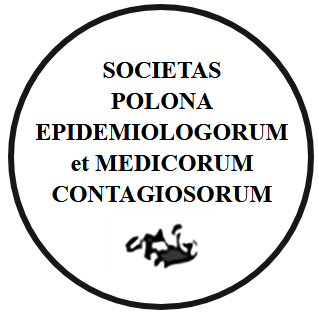RESEARCH PAPER
Patients with late syphilis and neurosyphilis treated in Bialystok in 2014-2023
1
Klinika Dermatologii i Wenerologii, Uniwersytet Medyczny w Białymstoku
Submission date: 2025-01-21
Final revision date: 2025-03-05
Acceptance date: 2025-03-25
Online publication date: 2025-04-07
Corresponding author
Agnieszka Beata Serwin
Klinika Dermatologii i Wenerologii, Uniwersytet Medyczny w Białymstoku, ul. Żurawia 14, 15-540 Białystok
Klinika Dermatologii i Wenerologii, Uniwersytet Medyczny w Białymstoku, ul. Żurawia 14, 15-540 Białystok
KEYWORDS
TOPICS
ABSTRACT
Background: Late syphilis (LS) is rarely reported stage of the infection with Treponema pallidum. It develops after one year of untreated infection and most frequently is asymptomatis. Central nervous system (CNS) can be involved in any stage of syphilis. Neurosyphilis (NS) can be asymptomatic or manifest as meningitis, meningovascular syphilis, parenchymatous syphilis, CNS gummas, ocular or auricular syphilis. Objective: To evaluate patients with LS and NS hospitalized at the Department of Dermatology and Venereology and treated at Outpatient Clinic of Medical University of Bialystok in years 2014-2023. Material and methods: A retrospective analysis of socio-demographic, epidemiological and clinical data, treatment of patients with LS and NS and, in part, their serological response after treatment. Results: Over a ten-year period 25 patients were treated for LS: 14 men and 11 women. The mean age in men was 39.3 and in women – 38.4 years (P>0.05). Majority of patients lived in urban areas and was in a steady partnership. Five men (35.7%) declared homosexual intercourses. Symptomatic LS was diagnosed only in one men. The median titre of a VDRL test was 1/16. After treatment follow up was completed in nine (36.0%) patients. In four of them (44.4%) no decline in VDRL titre was noticed one year after treatment. In the same period eight patients were treated for NS, confirmed by a cerebro-spinal fluid (CSF) examination. Only one of them had asymptomatic NS, remaining ones had neurological or ophthalmic abnormalities. In seven (87.5%) the VDRL test titre was at least 1/64. Half of men with NS were co-infected with HIV prior to diagnosis of NS. Conclusions: The study results confirm that LS is asymptomatic in majority of cases. Adherence to after-treatment follow-up remains suboptimal. The results suggest that in patients with high titre of serological tests for syphilis and concomitant HIV infection examination of CSF might be needed.
Share
RELATED ARTICLE
We process personal data collected when visiting the website. The function of obtaining information about users and their behavior is carried out by voluntarily entered information in forms and saving cookies in end devices. Data, including cookies, are used to provide services, improve the user experience and to analyze the traffic in accordance with the Privacy policy. Data are also collected and processed by Google Analytics tool (more).
You can change cookies settings in your browser. Restricted use of cookies in the browser configuration may affect some functionalities of the website.
You can change cookies settings in your browser. Restricted use of cookies in the browser configuration may affect some functionalities of the website.





